The 1877 Nez Perce War ended with the Battle of the Bear Paw in Montana. After a five-day siege the five non-treaty bands of Nez Perce surrendered with the understanding that they were to be sent to the Nez Perce Reservation in Idaho. A total of 418 Nez Perce surrendered: 87 men, 184 women, and 147 children. Among those who surrendered was Halahtookit (Daytime Smoke), the son of Captain William Clark, and his daughter and granddaughter.
Following their surrender, the Nez Perce were taken to Kansas as prisoners of war. Here they asked the army to take them to Idaho. They pointed out that General Miles had promised them that they could return home. General Sherman, however, denied their request saying:
“These Indians are prisoners and their wishes should not be consulted.”
In 1878, Congress appropriated money for the permanent resettlement of the non-treaty Nez Perce bands to Oklahoma. The Nez Perce, who were considered to be prisoners of war, were transported from Leavenworth by train and then by wagon to lands purchased from the Peoria and Miami tribes. The Commissioner of Indian Affairs assured Congress that the climate of Oklahoma was similar to that of the Nez Perce homelands in Idaho and Oregon.
On the first day of their journey, the Nez Perce were herded into an open field near a railroad siding. In temperatures hovering near one hundred degrees they waited in the open for the train. When it didn’t arrive, they spent the night in the open.
The following year, the government encouraged three young Nez Perce Presbyterians-James Reuben, Mark Williams, and Archie Lawyer-to travel from their Idaho reservation to Oklahoma so that they could preach to the exiled Nez Perce who were being held there as prisoners of war. The bands which had been at war with the United States were pagan, and many were followers of the Wanapan prophet Smohalla. If the Nez Perce prisoners were to move to the Nez Perce Reservation they would have to give up their pagan ways.
In 1879, Nez Perce leaders Chief Joseph and Yellow Bull and their interpreter traveled to St. Louis and then to Washington, D.C. In Washington, Chief Joseph addressed a packed house at the Lincoln Hall auditorium. For an hour and twenty minutes he told the audience about the history of his people, about the many broken promises, and about the problems they were having in Oklahoma. Chief Joseph and Yellow Bull spoke to a large group of cabinet members, congressmen, and diplomats. Joseph’s account of the causes of the war and their difficulties in Oklahoma were eloquent and moving. An interview with Joseph was also published in the North American Review. With this publicity, Joseph became the popular symbol among non-Indians for Nez Perce heroism.
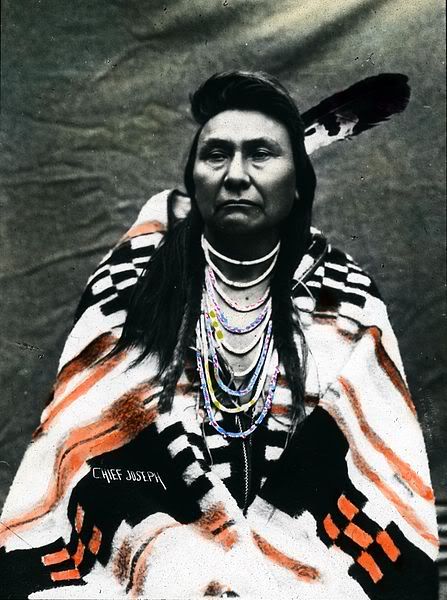
While they were in Washington, the Nez Perce were also granted a meeting with President Rutherford B. Hayes. They returned home hopeful that the government would fulfill some of its promises to them.
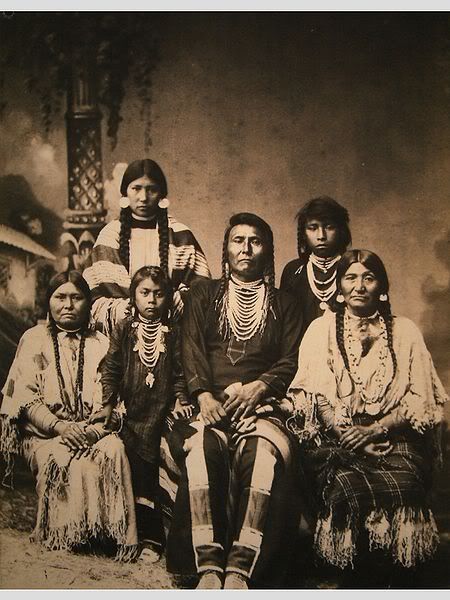
Shown above is Chief Joseph and family in 1880.
In 1880, Nez Perce Presbyterian leader Archie Lawyer organized a church among the exiled Nez Perce. At the same time, James Rueben opened a day school which had an average attendance of 80 students.
In 1883, a few of the Nez Perce prisoners of war-two elderly men and the rest women and orphans – were allowed to return to the reservation in Idaho. The government refused to appropriate any money for the move so the Nez Perce raised the money themselves by selling gloves, moccasins, and foodstuffs.
Finally, in 1884, the Nez Perce who had been exiled to Oklahoma for their 1877 war were allowed to return to the northwest. They were given a choice of going to the Nez Perce reservation in Lapwai, Idaho where they would have to become Christians or going to the Colville Reservation in Washington. Nez Perce warrior Yellow Wolf reported that they were asked:
“Where you want to go? Lapwai and be Christian, or Colville and just be yourself?”
According to Yellow Wolf:
“Because we respected our religion, we were not allowed to go on the Nez Perce Reservation.”
Chief Joseph and the members of his band were not allowed to choose and were required to go to the Colville Reservation.
The Lapwai Reservation in Idaho was a Presbyterian-administered reservation, and as such it was not an environment conducive to the practice of the old ways and beliefs. Those who wished to live as Christians would be welcomed, but those who wished to practice any of the old ways faced some danger. Among the Nez Perce captives, 118 chose to go to Lapwai.
On the Colville Reservation, those who wished to practice the old religion would be welcome. On the Colville Reservation the Nez Perce would be free from the oversight of the churches and Indian agents committed to their Christianizing and civilizing. Here they would be able to retain their traditional ways.
On the trip home, the train stopped in Pocatello where it was to be divided: taking some Nez Perce to Lapwai and some to Colville. As the train was stopped in Pocatello, U.S. Marshals attempted to arrest Chief Joseph for murder. Instead of dividing at Pocatello, the train continued through to Wallula Junction.
On the Colville Reservation, the Nez Perce settled in Nespelem territory. There was some friction as the Nespelem resented that the Nez Perce were settled on their land without their consent.
The non-Indian response to the return of the non-treaty Nez Perce to the Nez Perce Reservation raised a demand to re-garrison Fort Lapwai. One editor wrote:
“Isolated as we are and surrounded as we are by the most powerful tribe of Indians in the Northwest, the people of north Idaho have a right to demand from the government protection for their lives.”
After being settled on the Colville Reservation, Chief Joseph continued being a popular icon among non-Indians. In 1897, Chief Joseph was taken to New York City to participate in a parade for the dedication of Grant’s Tomb. He was invited to Madison Square Garden to watch Buffalo Bill’s Wild West Show. When Buffalo Bill realized that he was in the audience, he rode over and paid his respects.
In 1900, Chief Joseph, who was still a prisoner of war, was allowed by the government to visit the Wallowa Valley. He visited the grave sites of his parents and wept openly. The Americans who were now living in the valley, however, jeered him. They denigrated his spiritual connection to the land and they viewed his claims as antiquated and delusional.
In 1901, Pendleton Wool Company in Oregon produced its first catalog entitled The Story of the Wild Indian’s Overcoat which featured a picture of Chief Joseph arrayed in a Pendleton robe on the cover. In its catalog and its advertising, the company made an effort to describe native customs and traditions.
In 1903, Chief Joseph met with President Theodore Roosevelt in Washington, D.C.. At a buffalo dinner, Chief Joseph explained the situation of his people. He was promised by the President that someone would come to investigate the matter. It was another empty promise.
In 1903, railroad magnate James J. Hill invited Chief Joseph to give a speech in the Seattle Theater. Chief Joseph told the packed audience:
“The government at Washington has always given me many flattering promises but up to the present time has utterly failed to fulfill any of its promises.”
Chief Joseph died of a heart attack on the Colville Reservation in 1904. Some people say that he died of a broken heart.
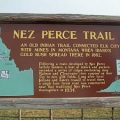
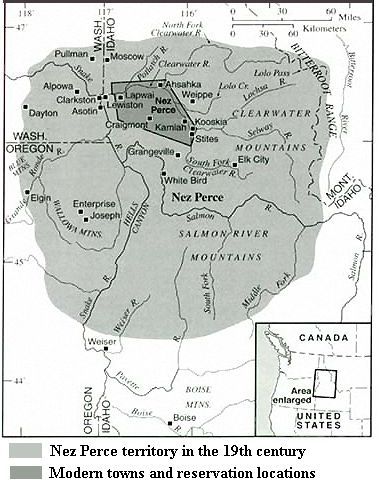
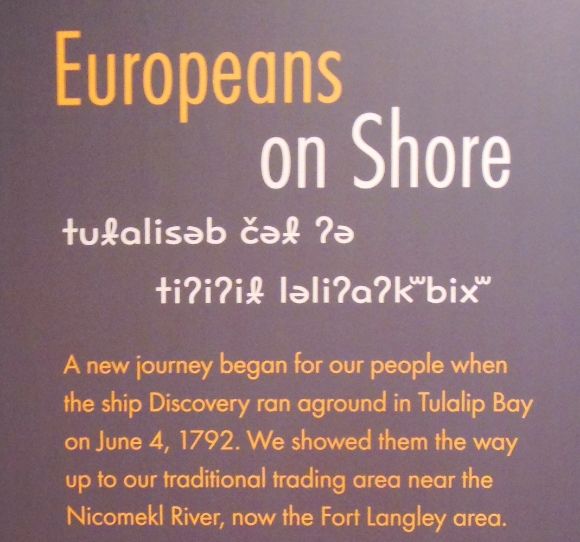
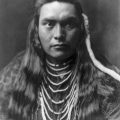
Leave a Reply